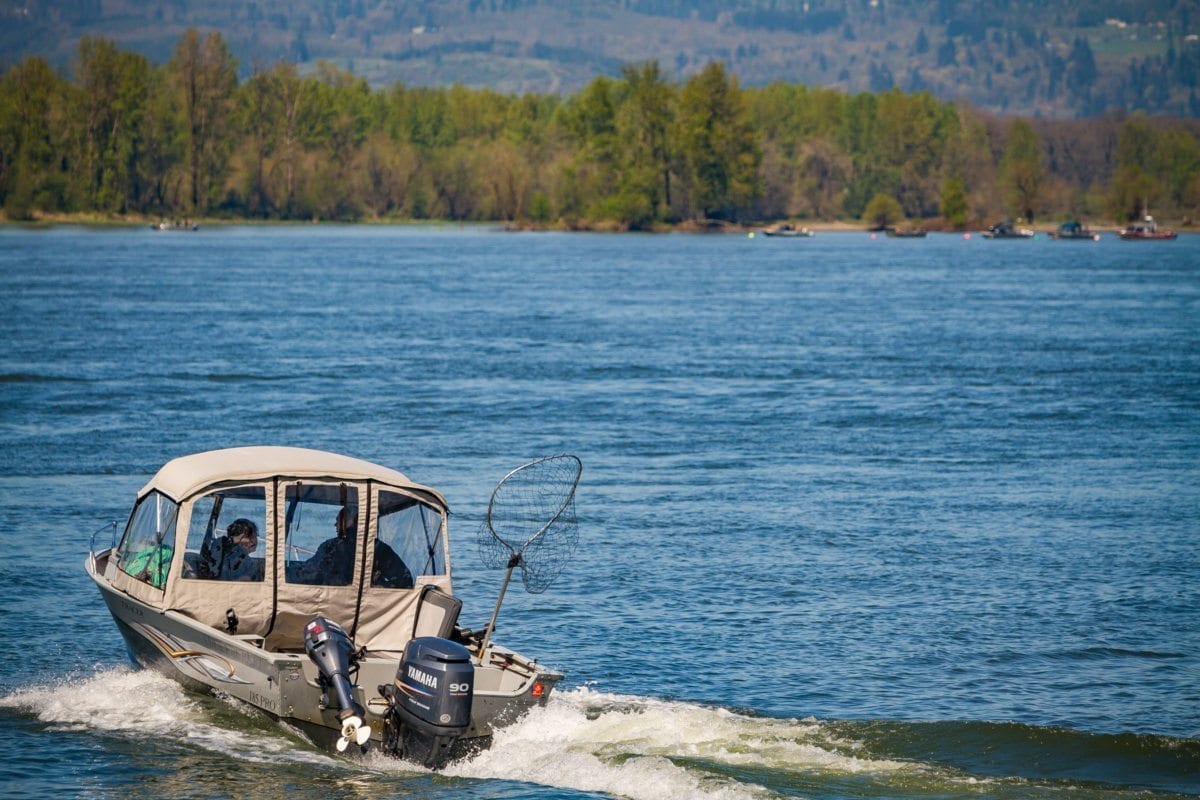Low salmon returns are the result of a variety of factors, including another year of poor ocean conditions
OLYMPIA — Projected poor returns of several salmon stocks are expected to limit fishing opportunities in Washington’s waters this year, state salmon managers announced Tuesday.
Forecasts for chinook, coho, sockeye, and chum salmon – developed by the Washington Department of Fish and Wildlife (WDFW) and treaty Indian tribes – were released during a public meeting in Olympia.

The forecast meeting marks the starting point for crafting 2018 salmon-fishing seasons in Puget Sound, the Columbia River and Washington coastal areas.
The annual salmon season-setting process is known as “North of Falcon.” Fishery managers have scheduled a series of public meetings through early April before finalizing seasons later that month.
Kyle Adicks, salmon policy lead for WDFW, said numerous salmon runs are expected to be lower this year compared to last season, including several key chinook and coho stocks. As a result, a number of fishing opportunities including the Columbia River will likely be restricted.
“We will definitely have to be creative in developing salmon fisheries this year,” Adicks said. “I encourage people to get involved and provide input on what they see as the priorities for this season’s fisheries.”
Adicks said the low salmon returns are the result of a variety of factors, including another year of poor ocean conditions.
The forecasts are based on varying environmental indicators, such as ocean conditions, as well as surveys of spawning salmon, and the number of juvenile salmon migrating to marine waters.
Columbia River
Roughly 236,500 “upriver brights” are expected to return to areas of the Columbia River above Bonneville Dam. That is down more than 50 percent from the most recent 10-year average.
An estimated 286,200 coho are projected to return to the Columbia River this year, down nearly 100,000 fish from the 2017 forecast. About 279,300 actually returned last year to the river, where some coho stocks are listed for protection under the federal Endangered Species Act (ESA).
Some salmon fisheries in the Columbia River will likely be more restrictive than last year, Adicks said.
Washington’s ocean waters
A lower return of coho and chinook to the Columbia River, combined with a poor forecast of coho returning to the Queets River, will likely mean further restrictions to Washington’s ocean salmon fishery as compared to last year, Adicks said.
This year’s forecast of about 112,500 hatchery chinook expected to return to the Columbia River is down more than 50 percent from last year’s forecast. Those hatchery chinook, known as “tules” are the backbone of the recreational ocean fishery.
Puget Sound
The expected return of 557,150 Puget Sound coho is down about 6 percent from the 10-year average. Very low returns to certain areas, such as the Strait of Juan de Fuca and the Snohomish River, could limit salmon fishing in those regions.
While the 2018 forecast of 227,400 Puget Sound hatchery chinook is up 38 percent from last year, continued low returns of ESA-listed wild chinook to some rivers will limit fisheries this year.
Conservation objectives
With the population of Puget Sound wild chinook in decline, salmon managers are working to finalize conservation goals for managing chinook fisheries in 2018.
“We’ll have a better idea of how restrictive Puget Sound salmon fisheries will be this year when NOAA provides its guidance in March,” Adicks said.
A 10-year management plan for harvesting Puget Sound chinook is being developed and will likely be submitted to NOAA Fisheries in late summer. More information on the plan can be found on the department’s website at https://wdfw.wa.gov/conservation/fisheries/chinook/, where WDFW will also post NOAA’s guidance for this year’s fisheries.
NOAA also may ask for additional restrictions on fisheries as the federal agency weighs conservation measures for southern resident killer whales, whose population has been declining along with salmon. State, tribal and federal fish and wildlife managers, together with their Canadian counterparts, are discussing how to recover the whale population. Some options include limiting fisheries, increasing hatchery production for salmon, improving water quality, and reducing boating activities in key killer whale habitat.
Salmon managers will continue to discuss the issue at upcoming meetings.
Also at those meetings, state salmon managers plan to discuss with the public ways to simplify salmon-fishing regulations. Anglers are invited to share ideas for making salmon fishing rules less complex during public meetings or by using an online commenting tool.
Public meetings and comment opportunities
A meeting schedule, salmon forecasts, and information about the salmon season-setting process are available on WDFW’s website at https://wdfw.wa.gov/fishing/northfalcon/. An online commenting tool will be available on the website later this week.
Upcoming meetings include:
- Ocean options: State, tribal and federal fishery managers will meet March 9-14 in Rohnert Park, Calif., with the Pacific Fishery Management Council (PFMC) to develop options for this year’s commercial and recreational ocean chinook and coho salmon fisheries. The PFMC establishes fishing seasons in ocean waters 3 to 200 miles off the Pacific coast.
- Regional discussions: Additional public meetings have been scheduled into April to discuss regional fishery issues. Input from these regional discussions will be considered as the season-setting process moves into the “North of Falcon” and PFMC meetings, which will determine the final 2018 salmon seasons.
- Final PFMC: The PFMC is expected to adopt final ocean fishing seasons and harvest levels at its April 6-11 meeting in Portland. The 2018 salmon fisheries package for Washington’s inside waters is scheduled to be completed by the state and tribal co-managers during the PFMC’s April meeting.
Information provided by Washington State Department of Fish and Wildlife.




